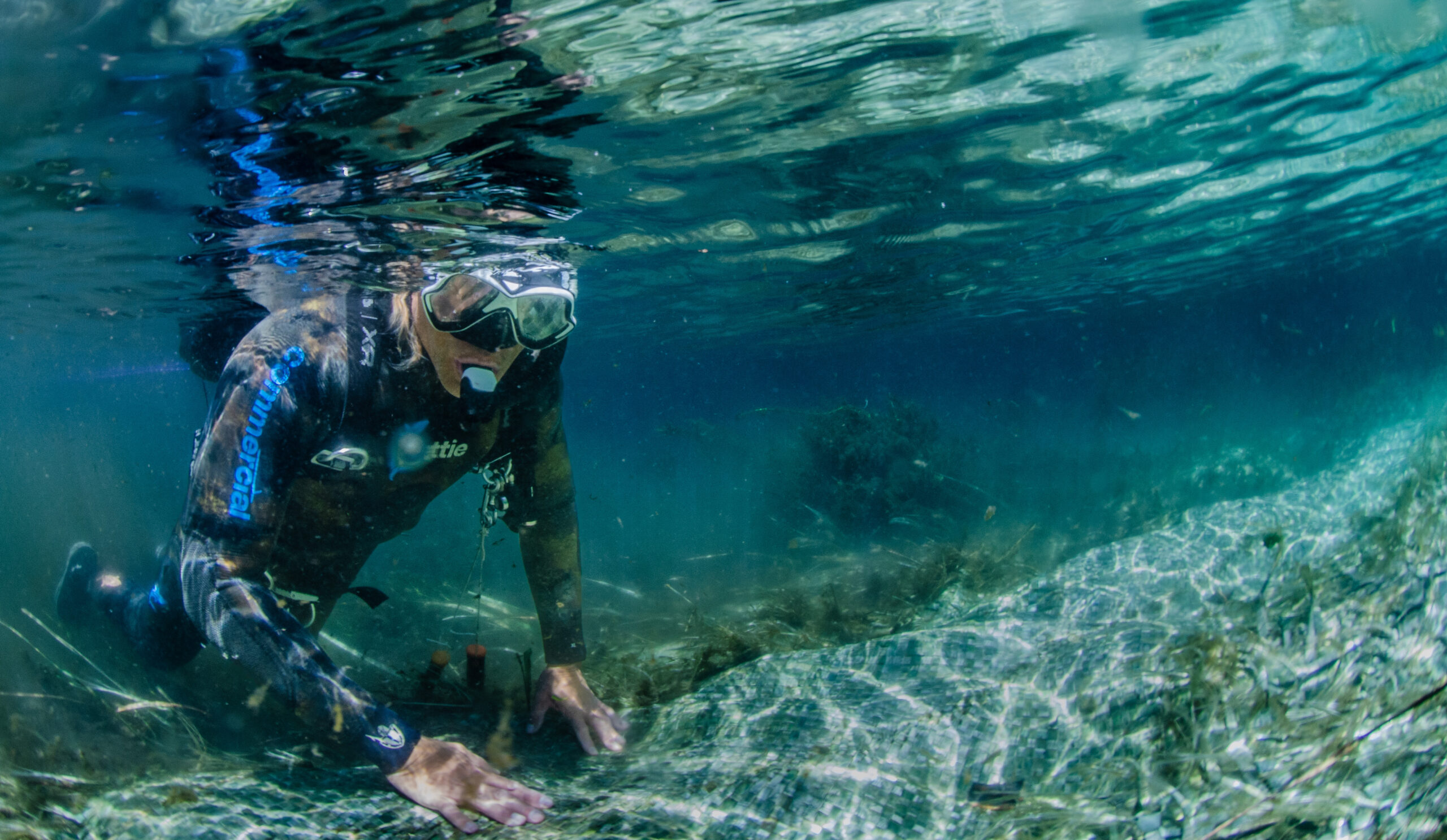Te Arawa Lakes Trust has broken new ground in its highly successful Uwhi trial, installing a new, hand-weaved harakeke mat in Kaikaitāhuna [Hamurana Springs] today.
Following a karakia, led by local hapū, Ngāti Rangiwewehi, Te Arawa Lakes Trust divers carried the Papa Tuwhara [Uwhi] into the middle of Kaikaitāhuna, near the bridge, and secured it to the stream bed.
Regular monitoring of the Papa Tuwhara site will provide information on how well the mātauranga Māori weed management method works in a stream, paving the way for how it can be used in different waterways.
The Trust’s dive team has monitored Uwhi trial sites in lakes Tarawera, Rotomā and Rotoiti regularly over the past 12 months, with results showing a consistent decrease in invasive weed species.
Trust Biosecurity Manager, William Anaru, says the trial has been a huge success so far.
“The sites have been monitored regularly to gauge weed growth and kōura restoration and overall, it has been found to be incredibly effective. The Uwhi lasts longer and therefore has a more sustained effect on killing and suppressing weed growth in our lakes.
“We have checked the condition of the Uwhi in the lakes and they are not too different from when they first went in. They are still suppressing invasive weeds 12 months on.
“We are thrilled to be in a position to trial the Uwhi in a stream as it means we have a chance to eradicate pest weed in the waterways that feed into our lakes as well.”
The Papa Tuwhara has been created by Ngāti Rangiwewehi weavers, an extention to the overall Uwhi journey.
“We have improved some of the weaving to hold the mat together stronger for the moving water,” Anaru says.
“Tangata whenua knowledge is key to the environment we are working in. Kaikaitāhuna is a taonga (treasure) to the people of Ngāti Rangiwewehi and their association with the spring goes back to the mid-1300s. Their knowledge can only help us better understand the mahi we are doing.”
Chairperson of Tarimano Marae Trust, Ngāti Rangiwewehi, Karl Rangikawhiti Leonard says while eradication of invasive weed species is the primary objective, there is much more to the kaupapa.
“The harakeke grows within the vicinity of the waters of Kaikaitāhuna, continuing a symbiotic relationship between plant, soil and water.
“There is also the human element of Ngāti Rangiwewehi, who are connected to Hinerua, our guardian of the waters and koanga [spring] is the time when regrowth and regeneration starts its vigorous cycle.
“It is hoped that the infusion of koanga, our kaitiaki Hinerua and the efforts of the people within the Kaikaitāhuna waters are a holistically-balanced combination to keep invasive weed species at bay.”
Led by the Trust, with support from Toitū Te Whenua Land Information New Zealand through its Jobs for Nature programme, the Uwhi trial has provided a low-cost, native alternative to imported hessian weed mats.

